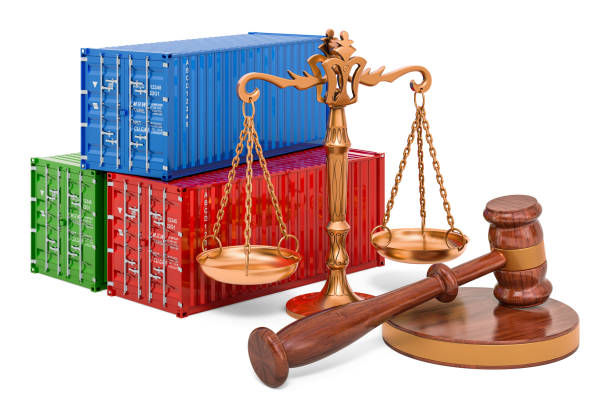Global Mobile Device Supply Chains: Import Procedures and Cost Analysis
Understanding the complexities of international mobile device procurement requires knowledge of regulations, logistics, and financial considerations. The global smartphone market relies heavily on manufacturing hubs, particularly in Asia, where production costs and established infrastructure create favorable conditions for businesses seeking to source devices. This analysis examines the procedural requirements, cost structures, and strategic considerations involved in international phone procurement operations.

Understanding International Phone Procurement Processes
The process of sourcing mobile devices internationally involves multiple regulatory steps and compliance requirements. Businesses must navigate customs regulations, import duties, and certification standards that vary by destination country. Importers typically begin by identifying reliable manufacturers or distributors, verifying product authenticity, and ensuring devices meet local technical standards such as frequency band compatibility and safety certifications. Documentation requirements include commercial invoices, packing lists, certificates of origin, and compliance declarations. Import licenses may be necessary depending on the destination country’s telecommunications regulations. The entire process requires careful coordination between suppliers, freight forwarders, customs brokers, and regulatory authorities.
Cost Structure Analysis for International Device Sourcing
The financial aspects of international phone procurement extend beyond the unit purchase price. Total landed costs include the device cost, international shipping fees, customs duties, value-added taxes, certification expenses, and warehousing charges. Customs duties on mobile devices typically range from 0% to 15% depending on the importing country, with some nations offering preferential rates under trade agreements. Shipping costs vary based on volume, transportation method, and urgency, with sea freight averaging $2-5 per kilogram and air freight ranging from $8-15 per kilogram. Additional expenses include quality inspection fees, insurance premiums, and potential storage costs at ports or distribution centers. Currency exchange rate fluctuations can significantly impact final costs, making financial planning essential.
Sourcing Strategies and Supplier Identification
Successful international device procurement requires thorough supplier research and relationship building. Manufacturers and distributors can be identified through trade shows, B2B platforms, industry networks, and direct factory visits. Due diligence processes should verify business licenses, production capabilities, quality control systems, and previous client references. Minimum order quantities often range from 100 to 1,000 units depending on the supplier and device model. Payment terms typically involve deposits of 30-50% with balance due before shipment, though established relationships may allow for more flexible arrangements. Sample orders help assess product quality and supplier reliability before committing to larger purchases. Third-party inspection services provide independent verification of product specifications and manufacturing standards.
Regulatory Compliance and Certification Requirements
Mobile devices must meet various technical and safety standards before legal importation and sale. Certification requirements include FCC approval for the United States, CE marking for European markets, and similar standards for other regions. Devices must comply with electromagnetic compatibility regulations, radio frequency specifications, and electrical safety standards. Certification processes typically cost between $5,000 and $20,000 per device model and take 4-12 weeks to complete. Intellectual property considerations require verification that devices do not infringe on patents or trademarks. Software compliance ensures operating systems and applications meet licensing requirements. Failure to obtain proper certifications can result in shipment seizures, financial penalties, and legal complications.
Logistics and Shipping Considerations
Transportation logistics significantly impact both costs and delivery timelines. Sea freight offers economical solutions for large volumes, with transit times of 20-45 days from major Asian ports to international destinations. Air freight provides faster delivery within 5-10 days but at substantially higher costs. Consolidated shipping allows smaller importers to share container space, reducing per-unit transportation expenses. Incoterms define responsibility boundaries between buyers and sellers, with common terms including FOB (Free on Board) and CIF (Cost, Insurance, and Freight). Insurance coverage protects against loss, damage, or theft during transit, typically costing 0.3-0.5% of shipment value. Customs clearance procedures require accurate documentation and may involve physical inspections that delay delivery.
Real-World Cost Comparison and Provider Analysis
Understanding typical cost structures helps businesses plan procurement budgets effectively. The following comparison illustrates estimated costs for importing smartphones through different channels:
| Sourcing Method | Estimated Unit Cost | Additional Fees | Total Landed Cost |
|---|---|---|---|
| Direct Manufacturer | $80-150 | Shipping $3-8, Duties 5-10%, Certification $5-10 | $95-185 |
| Trading Company | $90-165 | Shipping $3-8, Duties 5-10%, Certification included | $100-190 |
| Wholesale Platform | $95-175 | Shipping $5-12, Duties 5-10%, Certification varies | $110-205 |
| Regional Distributor | $110-200 | Shipping $2-5, Duties 5-10%, Certification included | $120-220 |
Prices, rates, or cost estimates mentioned in this article are based on the latest available information but may change over time. Independent research is advised before making financial decisions.
Risk Management and Quality Assurance
International procurement involves various risks requiring mitigation strategies. Quality control measures include pre-shipment inspections, factory audits, and sample testing protocols. Payment security mechanisms such as letters of credit or escrow services protect against fraud. Contractual agreements should clearly define quality standards, warranty terms, and dispute resolution procedures. Supply chain diversification reduces dependency on single suppliers and minimizes disruption risks. Market research ensures imported devices meet consumer preferences and competitive pricing requirements. Legal counsel familiar with international trade law helps navigate complex regulatory environments and protect business interests.
Conclusion
International mobile device procurement presents both opportunities and challenges for businesses worldwide. Success requires comprehensive understanding of import procedures, cost structures, regulatory compliance, and supplier relationships. While the process involves significant complexity, careful planning and thorough research enable businesses to source quality devices at competitive prices. The financial considerations extend beyond purchase prices to encompass shipping, duties, certifications, and risk management expenses. Businesses must remain informed about changing regulations, market conditions, and technological standards to maintain efficient and compliant international sourcing operations.




